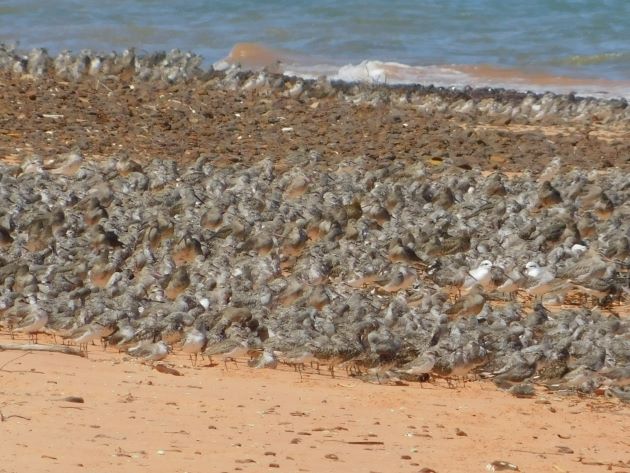
There are three subspecies of Black-tailed Godwit in the world. In Australia we encounter the subspecies Limosa limosa melanuroides. The Black-tailed Godwits that we observe here in Australia breed in east Siberia and Mongolia. The migratory shorebirds are now returning to the Broome area and the numbers of birds on the beaches of Roebuck Bay are rapidly increasing. Black-tailed Godwits are similar to Bar-tailed Godwits at first glance and when you are faced with a large mixed flock of shorebirds like above it pays to look carefully. In flight the black tail of the Black-tailed Godwit is obvious, but when they are all at roost you need to look for more features.
Both the female Black-tailed Godwit and Bar-tailed Godwit are larger than the male of the species. The Black-tailed Godwit is a more delicate looking tall shorebird with finer features. It also has a bi-coloured bill unlike the Asian Dowitcher, which is also present amongst our flocks of shorebirds. The Black-tailed Godwit can have a variety of plumage depending on the time of year. In non-breeding plumage they are almost brown, but add a reddish brown colour when they are in breeding plumage. Bar-tailed Godwits also change their plumage around the same time, so you have to be careful with your observations to work out which species of shorebird you are observing.
Inland from the coast around Broome if you encounter one of the Godwit species it is more than likely a Black-tailed Godwit. Last weekend we encountered one lone Black-tailed Godwit amongst other migratory shorebirds at an ephemeral lake. It was feeding amongst the recently returned Sharp-tailed Sandpipers. There were also Black-winged Stilts and the Red-kneed Dotterels feeding around the area. It is much easier to see the defining features when it is a lone bird and not surrounded by hundreds of other shorebirds.

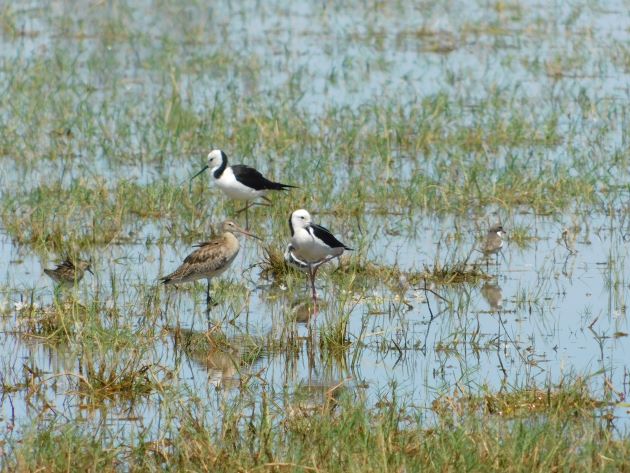
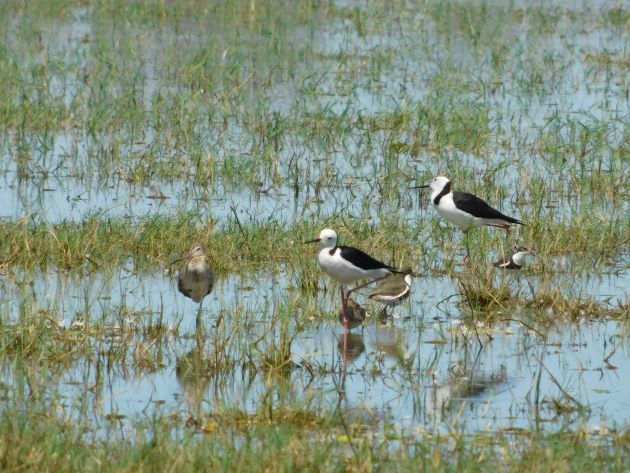
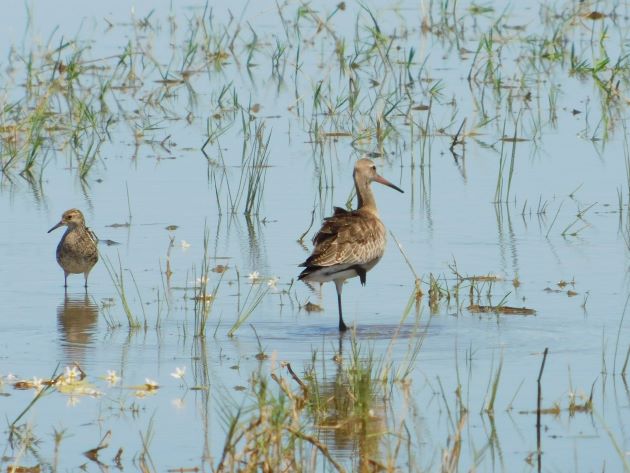
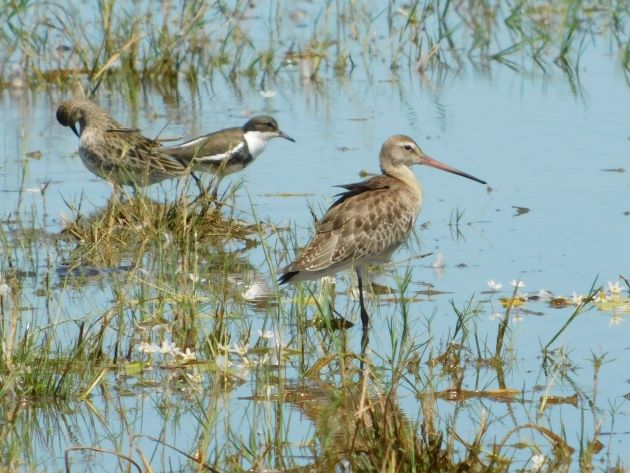
Black-tailed Godwit, Sharp-tailed Sandpipers, Red-kneed Dotterels and Black-winged Stilt
In the UK right now my Mum is also observing good numbers of Black-tailed Godwits at her local reserve. Black-tailed Godwits are on the move all around the world. An article has been published recently describing the current breeding distributions and predicted range shifts due to climate change in the two subspecies of Black-tailed Godwit in Asia.
All of the migratory shorebirds make incredible journeys around the world to breed. It doesn’t hurt to take a moment to pause and reflect on the lives they live and what we can do to help them with their long term survival. We can all do our little bit and make sure our beaches are kept as free of rubbish as possible and don’t let dogs chase any birds under any circumstances. There are migratory shorebirds that need to replace their body weight after such long distance flights and there are resident shorebirds that are not developed enough to fly. We can all enjoy and appreciate our surrounding wildlife and encourage others to do the same.













Leave a Comment